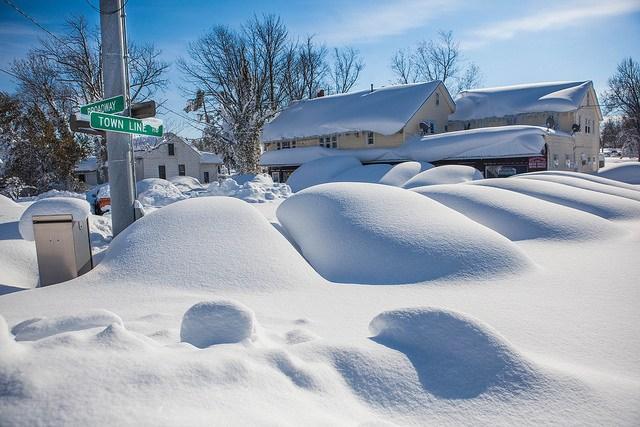
When discussions of climate change begin, their focus is usually on a warmer planet and the implications such as hotter weather, drought, and other threats ranging from food security to water scarcity. Then citizens living in a cold weather climate suddenly find themselves buried in snow during the middle of winter which, of course, naturally begs the question: Is there really such a thing as climate change or global warming?
Hence some organizations prefer the term “climate volatility,” as many of the risks that society faces involves cases of extreme weather -- as in: the typhoons that wreaked havoc across Southeast Asia or, more recently, Hurricane Matthew’s impact on the Caribbean and the Southeastern U.S. And those events do not necessarily have to occur solely during the warmer months of a calendar year.
In fact, a study published last week in the journal Nature suggests this upcoming winter could have a dramatic impact across the world’s northern regions.
According to the researchers who authored the study, the polar vortex has moved away from North America and closer to Europe and Asia. For decades, those swirling wind patterns remained relatively close to the North Pole, but scientific evidence suggests climate change has disrupted that longstanding trend.
The results could include longer cold spells and a delay in the beginning of spring. The loss of Arctic ice cover is most likely a large contributor to this phenomenon, although the scientists who conducted this study also posit that a surge in snow cover across Europe and Asia is also a factor. The outcome is a weaker polar vortex, which in turn causes Arctic cold to plunge farther south, creating harsher-than-expected winters.
Data accumulated over the past few years suggests that these harsher periods of Arctic chill have become an annual occurrence, but this year’s winter could be more disruptive than the 2013-2014 season. Lost productivity, infrastructure repairs and cancelled flights were amongst the reasons why analysts suggest those several months leading into 2014 cost the U.S. economy a minimum of $5 billion in damages and lost revenues.
Furthermore, an overall warmer climate leads to more evaporation, which in turn sparks an increase in precipitation. Scientific American points to one example a decade ago: Despite the fact that Lake Erie did not freeze over for the first time in recorded history, snowfall in the surrounding region actually increased compared to previous years.
It is important, however, to have some perspective. Despite the drastically cold winters in recent years, the U.S. Department of Energy is one of many organizations that insist temperatures have risen more rapidly than during any other season.
Citizens, therefore, find themselves in the midst of a vicious circle. A difficult winter will lead to an increased demand for natural gas and electricity, resulting in more greenhouse gas emissions. Massive storms can create the double-whammy of economic losses and costly damage to homes, businesses and infrastructure.
This is not to say the future necessarily has to be a dystopian one. Extreme winters actually make the business case for accelerated investment in renewables, as the chaotic 2013-2014 winter and resulting power plant failures gave wind power installations an opportunity to shine. There is also an opening for new and advanced solar technologies that can perform well in such temperatures, such as the Tesla roof tiles that made a splash late last week.
And while the development of clean-energy technologies that still perform well during extreme weather can help the globe meet those pesky COP21 goals, there are plenty of opportunities for entrepreneurs who can help citizens and businesses deal with dramatic winter temperatures now. From better insulation to more resilient building materials to even higher performing greenhouses, improved technologies available today can provide copious business opportunities while providing society the necessary tools to adapt to a climate where constant surprises will be the new normal.
Image credit: Anthony Quintano/Flickr

Leon Kaye has written for 3p since 2010 and become executive editor in 2018. His previous work includes writing for the Guardian as well as other online and print publications. In addition, he's worked in sales executive roles within technology and financial research companies, as well as for a public relations firm, for which he consulted with one of the globe’s leading sustainability initiatives. Currently living in Central California, he’s traveled to 70-plus countries and has lived and worked in South Korea, the United Arab Emirates and Uruguay.
Leon’s an alum of Fresno State, the University of Maryland, Baltimore County and the University of Southern California's Marshall Business School. He enjoys traveling abroad as well as exploring California’s Central Coast and the Sierra Nevadas.














